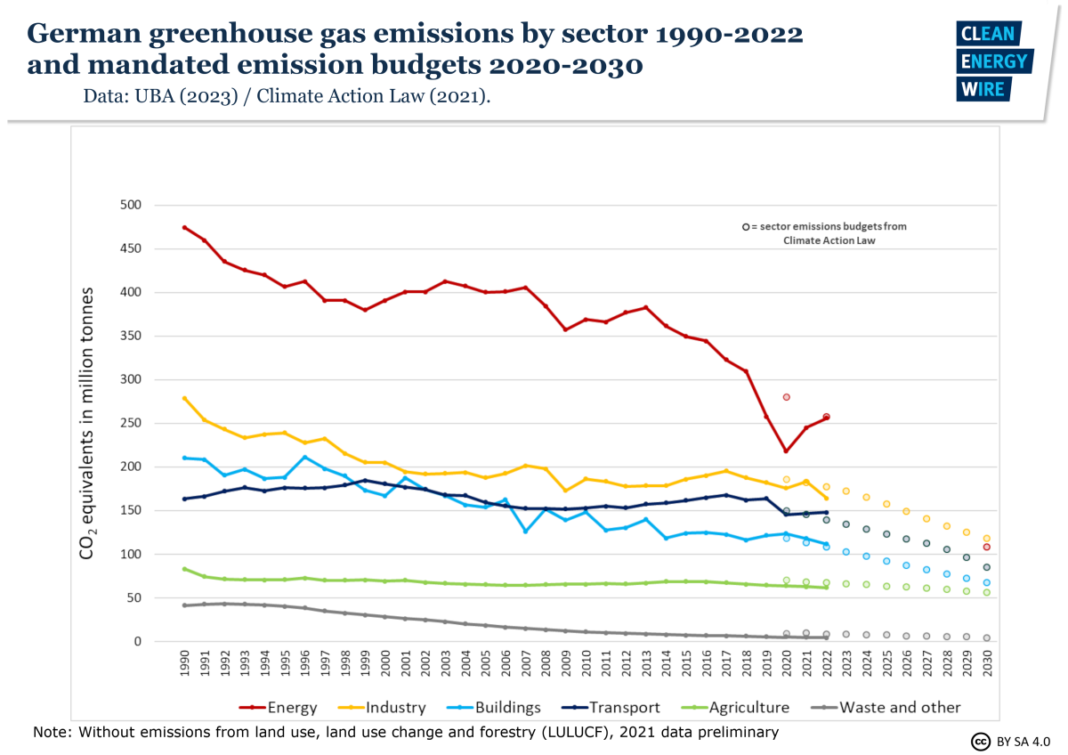This factsheet provides an overview of Germany’s greenhouse gas emissions and the government’s energy transition targets. [UPDATES with 2022 emissions data by UBA]
Germany’s national climate targets
Germany aims to become greenhouse gas neutral by 2045. It has set the preliminary targets of cutting emissions by at least 65 percent by 2030 compared to 1990 levels, and 88 percent by 2040. The country’s first national climate law , passed in 2019 and amended in 2021 , states annual reduction targets for individual sectors such as industry and transport until the year 2030. These are set in line with the European greenhouse gas emission reduction plans. In case a target is missed or overshot, the law states that the difference will be spread out evenly over the remaining annual emissions budgets of the sector until 2030 and beyond, with further targets set for 2040 and 2045. The ambition of Germany’s national climate targets can be raised but not lowered. Germany’s climate law also states that new emission budgets for the years after 2030 will be set in 2024, and that these must be in line with the goals of the law and the requirements of the European Union – climate neutrality by 2050.
Germany is one of a handful of countries globally to have enshrined the goal of climate neutrality by or before 2050 in its national law. The European Union decided to […]
Click here to view original web page at www.cleanenergywire.org

